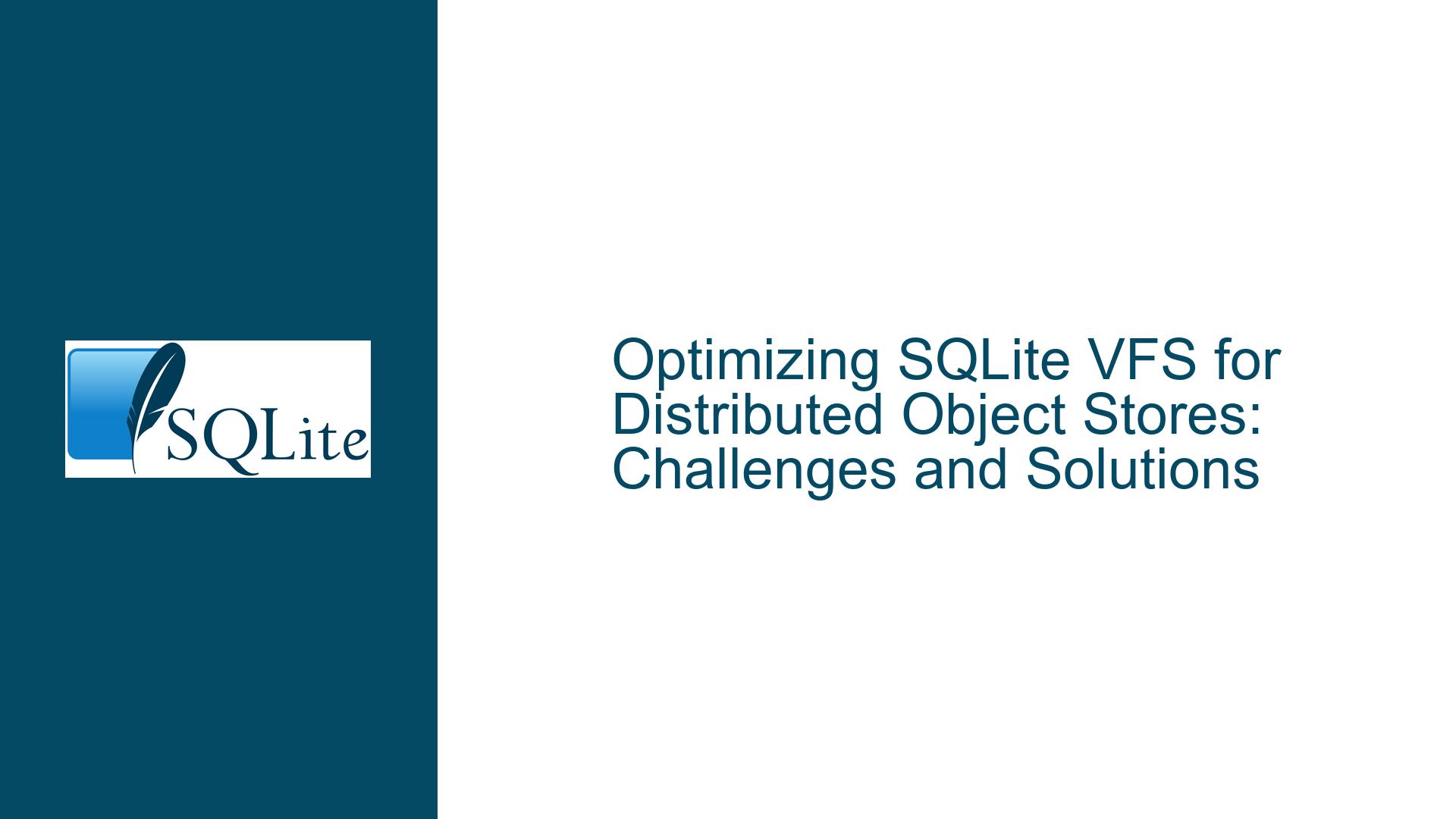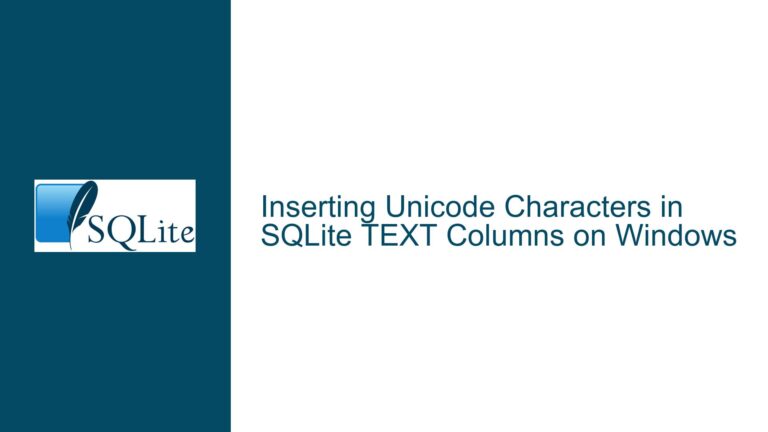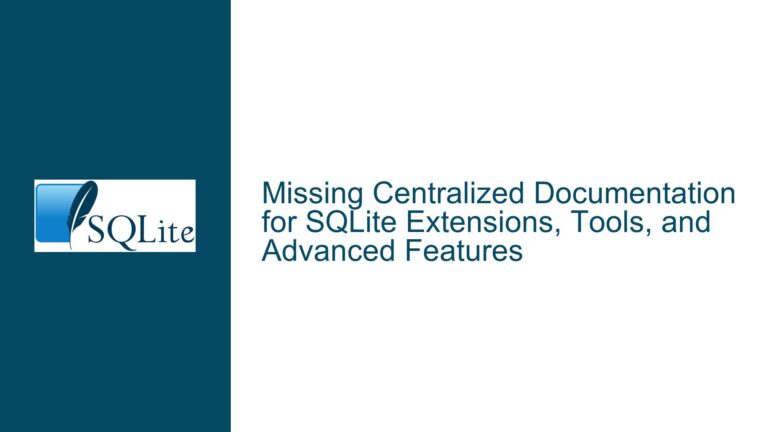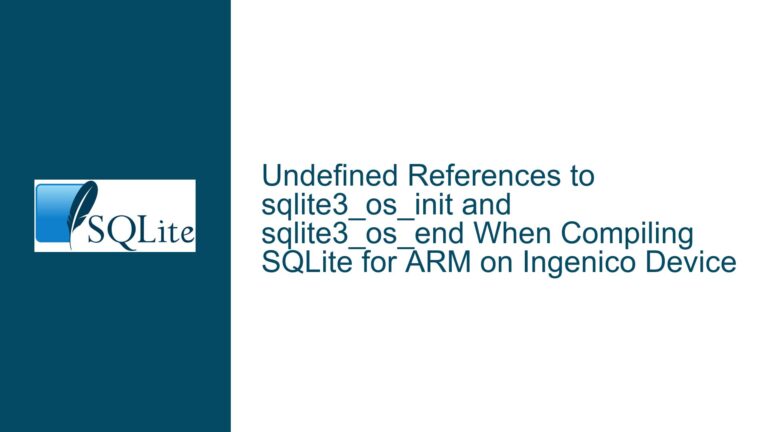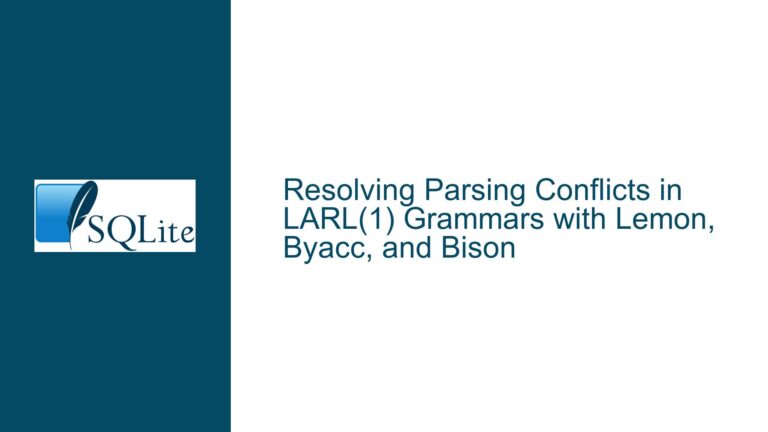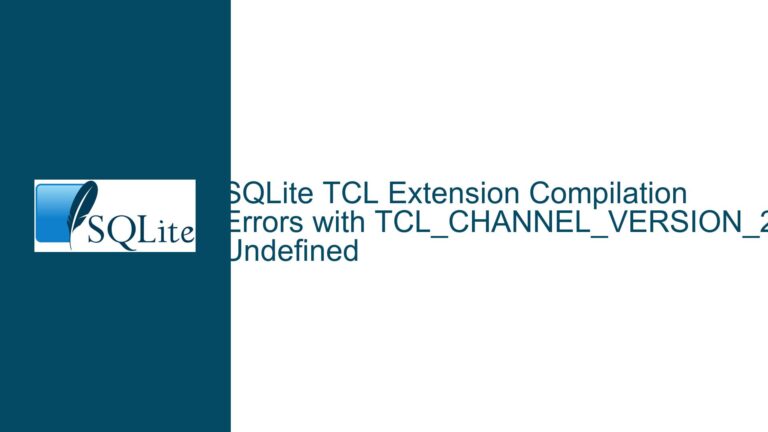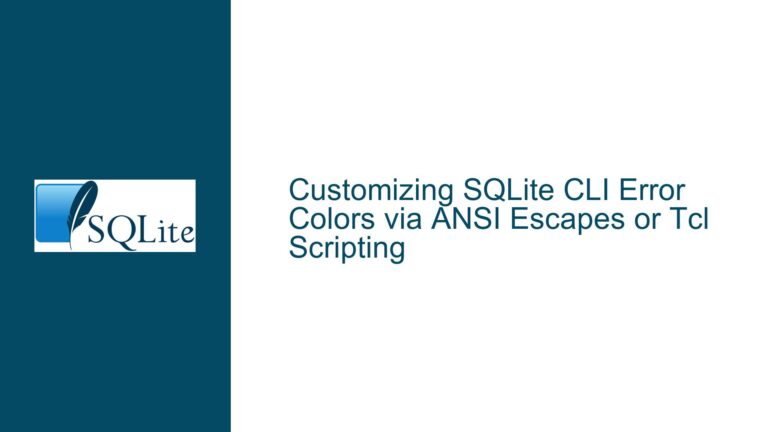Optimizing SQLite VFS for Distributed Object Stores: Challenges and Solutions
Synchronous Read API and Asynchronous Optimization Challenges
The core issue revolves around the synchronous nature of SQLite’s read API, which poses significant performance bottlenecks when interfacing with distributed object storage systems like Ceph. In such systems, every read operation requires waiting for a response from an Object Storage Device (OSD), leading to inefficiencies, especially when executing complex queries that necessitate multiple reads. The lack of asynchronous read capabilities in SQLite’s VFS (Virtual File System) layer exacerbates this problem, as it prevents the system from initiating multiple reads in parallel or prefetching data that will be needed in the near future.
The synchronous read API forces the VFS to wait for each read operation to complete before proceeding, which is particularly problematic in distributed environments where network latency can significantly impact performance. While readahead mechanisms can be implemented at the VFS layer to mitigate some of these inefficiencies, they are often suboptimal compared to native asynchronous read support. For instance, readahead requires predicting future read patterns, which is challenging and can lead to unnecessary data fetches, wasting bandwidth and storage resources.
A more elegant solution would involve SQLite initiating priming reads for a range of pages it anticipates needing in the future, allowing the VFS to asynchronously fetch and cache these pages. This approach would avoid the complexities of asynchronous completion handling while still improving performance. However, implementing such a feature would require significant changes to SQLite’s internal architecture, particularly its pager and b-tree modules, which are currently designed around synchronous I/O operations.
VFS Initialization, Documentation Gaps, and Required Functionality
Another critical issue is the complexity of loading a VFS from a static or compile-time-linked dynamic library. The current process involves cumbersome API gymnastics, which could be streamlined to improve developer experience. For example, the sqlite3_os_init function could be extended to support more straightforward initialization routines, reducing the need for custom patches and workarounds.
Additionally, the SQLite documentation lacks clarity on which VFS members are mandatory and which are optional. For instance, the xRandomness and xGetLastError functions appear to be optional, as their absence does not cause runtime errors. However, the xCurrentTime function is mandatory, and its absence results in a segmentation fault (SIGSEGV). This inconsistency in documentation can lead to confusion and errors during VFS development. Providing clear guidelines on required and optional VFS members would significantly ease the development process.
The xFullPathname function, which is responsible for canonicalizing database file names, is another area that could benefit from improved documentation. While it is called once for each database attachment, its exact purpose and expected behavior are not well-documented. Clarifying its role and providing examples of its implementation would help developers better understand how to use it effectively.
Temporary Tables, Sector Size, and Journal Persistence in Distributed Environments
Temporary tables present a unique challenge in distributed storage systems. Unlike traditional file systems, distributed object stores require context information about where to store transient data, such as the storage pool or namespace. However, SQLite’s temporary table implementation lacks this context, forcing developers to store temporary tables in memory. This limitation can lead to increased memory usage and reduced performance, particularly for workloads that rely heavily on temporary tables.
The xSectorSize function, which is intended to specify the sector size for I/O operations, appears to have no effect on the actual size of reads and writes performed on the database. Instead, developers are advised to use the page_cache pragma to control page size and caching behavior. This discrepancy between the intended and actual behavior of xSectorSize highlights a need for better alignment between SQLite’s VFS layer and its internal pager module.
Journal persistence (PERSIST) is a valuable optimization for distributed storage systems, as it reduces the overhead of journaling by avoiding frequent writes to the journal file. However, enabling this optimization currently requires setting a pragma for every database connection, which can be cumbersome. Allowing the VFS to hint at this optimization as a new default would simplify its use and improve performance out of the box.
Troubleshooting Steps, Solutions, and Fixes
To address the synchronous read API issue, developers can explore implementing custom readahead mechanisms at the VFS layer. While this approach is not ideal, it can provide some performance improvements by prefetching data based on anticipated read patterns. Additionally, developers can experiment with patching SQLite’s pager module to support asynchronous reads, though this requires a deep understanding of SQLite’s internals and may not be feasible for all projects.
For VFS initialization and documentation gaps, developers should refer to the SQLite source code and community forums for guidance on required and optional VFS members. When in doubt, implementing all VFS members is a safe approach to avoid runtime errors. To simplify VFS loading, developers can patch the sqlite3_os_init function to include additional setup routines, as demonstrated by David Jones in the discussion.
To handle temporary tables in distributed environments, developers can force the use of in-memory storage for temporary tables, as suggested in the Ceph documentation. While this approach has limitations, it ensures compatibility with distributed storage systems. For better performance, developers can advocate for SQLite to introduce context-aware temporary table storage in future releases.
Regarding sector size and journal persistence, developers should rely on the page_cache pragma to control page size and caching behavior, as the xSectorSize function does not appear to have the intended effect. To simplify the use of journal persistence, developers can create wrapper functions or scripts to automatically set the necessary pragmas for each database connection.
Finally, to improve the overall performance of SQLite in distributed environments, developers can explore prefetching interior b-tree pages, as suggested by mlin. This approach can reduce the need for serial chains of network roundtrips, improving query response times. Additionally, developers can experiment with modifying SQLite’s b-tree and pager implementation to promote contiguous storage of interior pages, though this requires significant effort and expertise.
By addressing these challenges and implementing the suggested solutions, developers can optimize SQLite’s performance and usability in distributed object storage systems, unlocking its full potential for large-scale, data-intensive applications.
